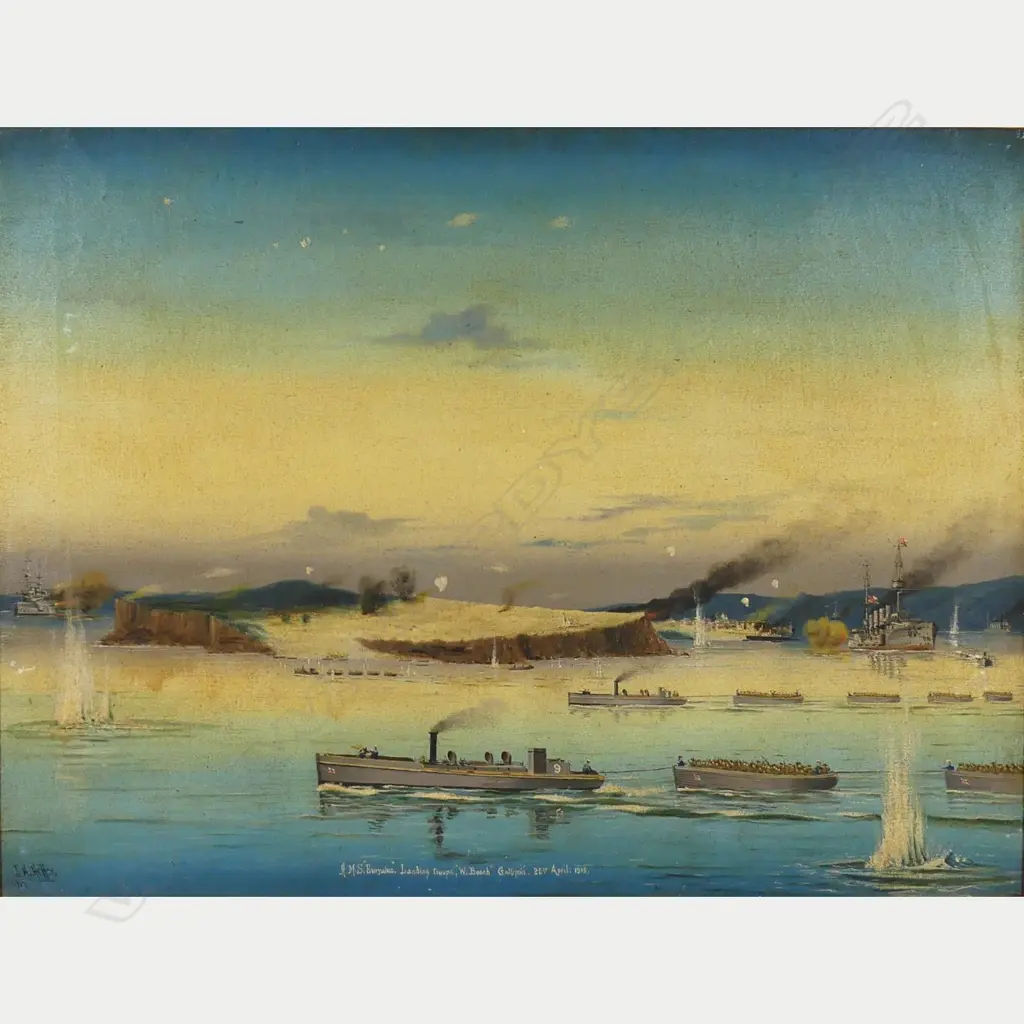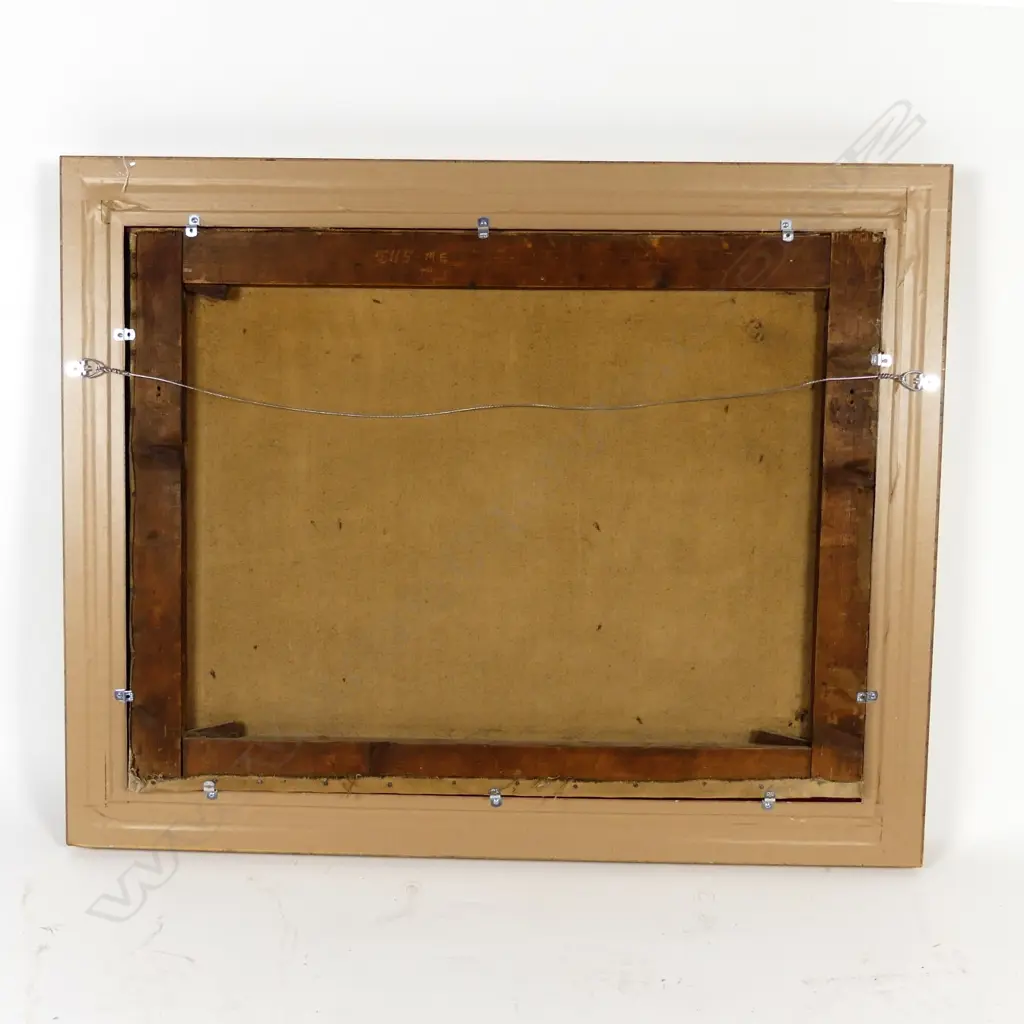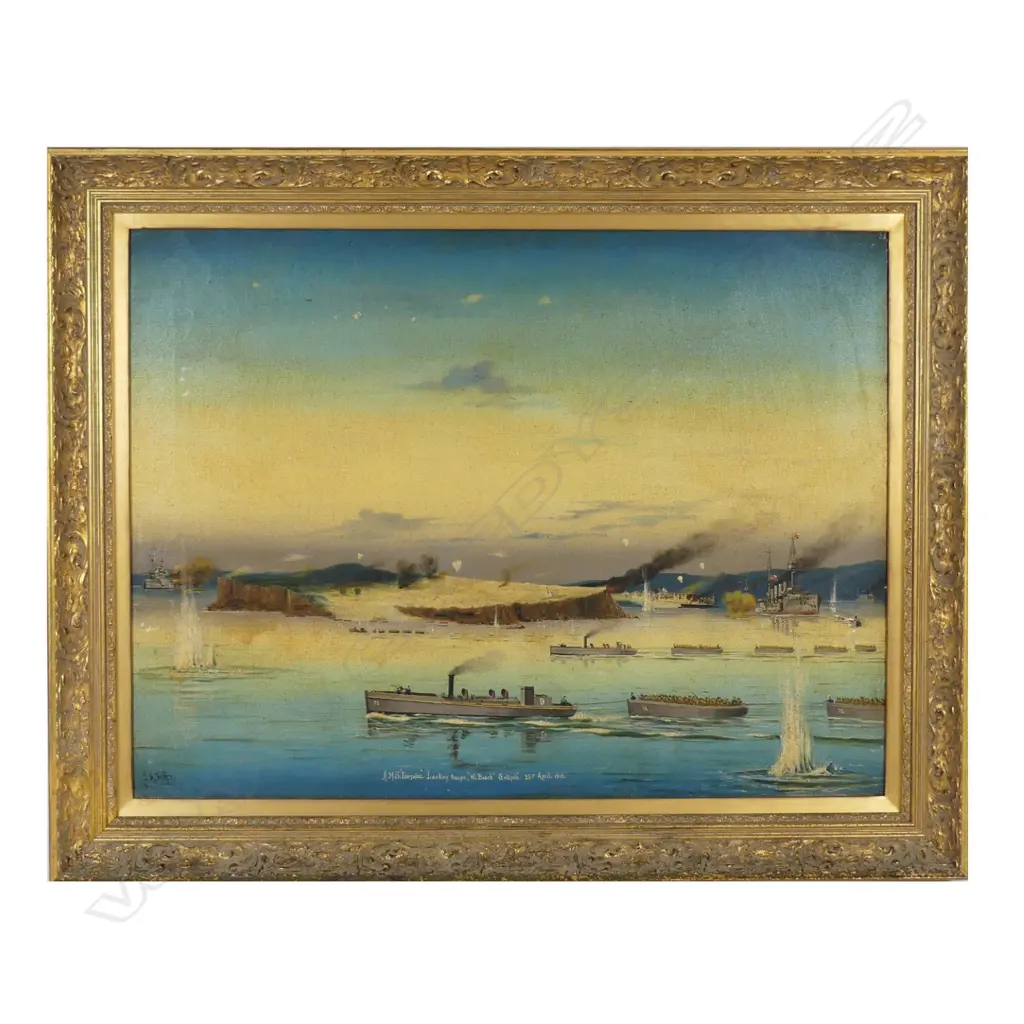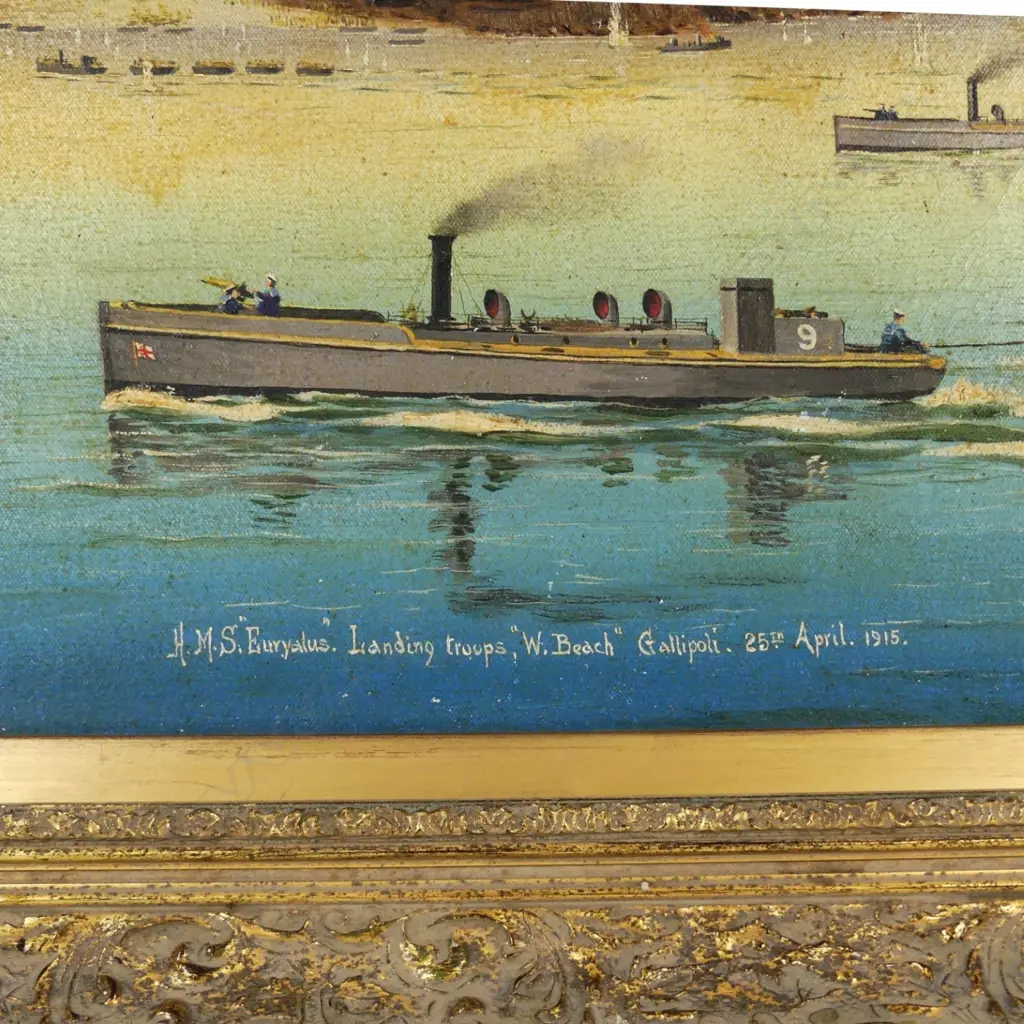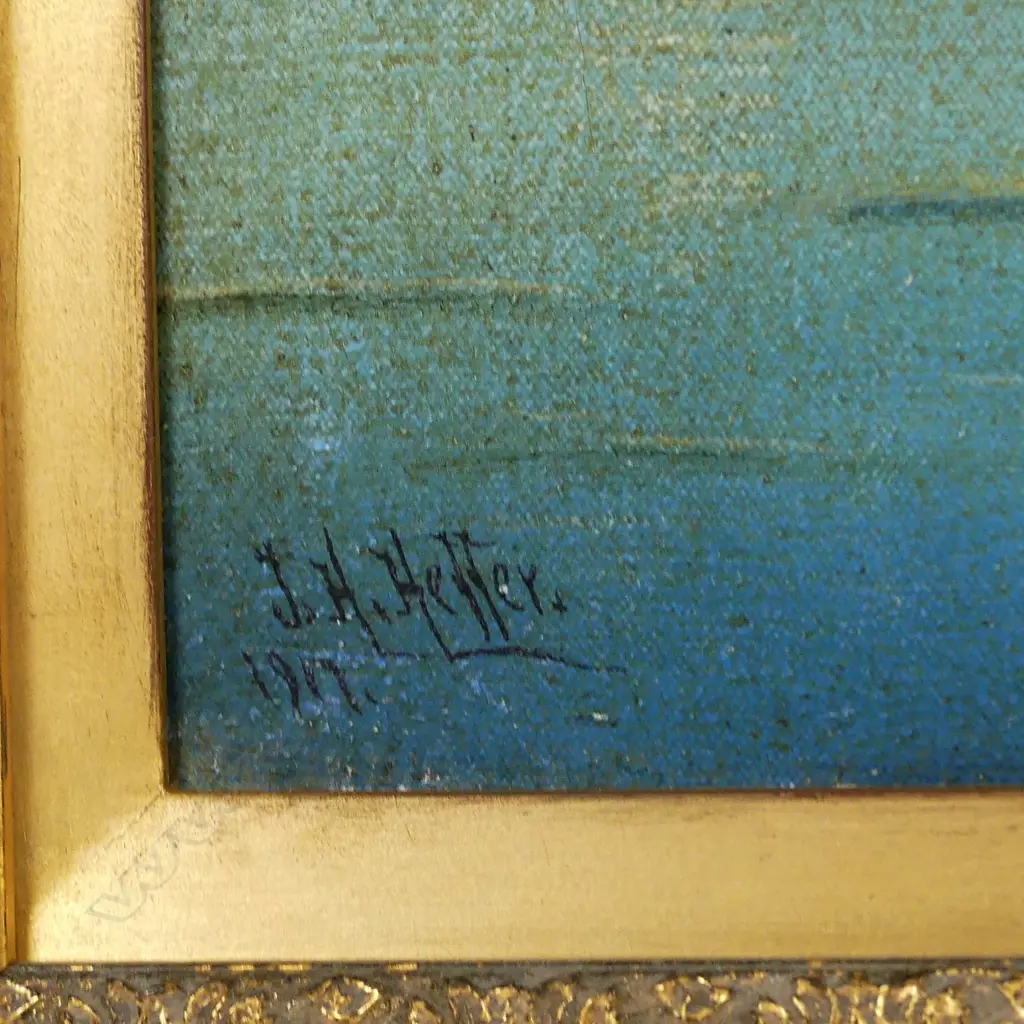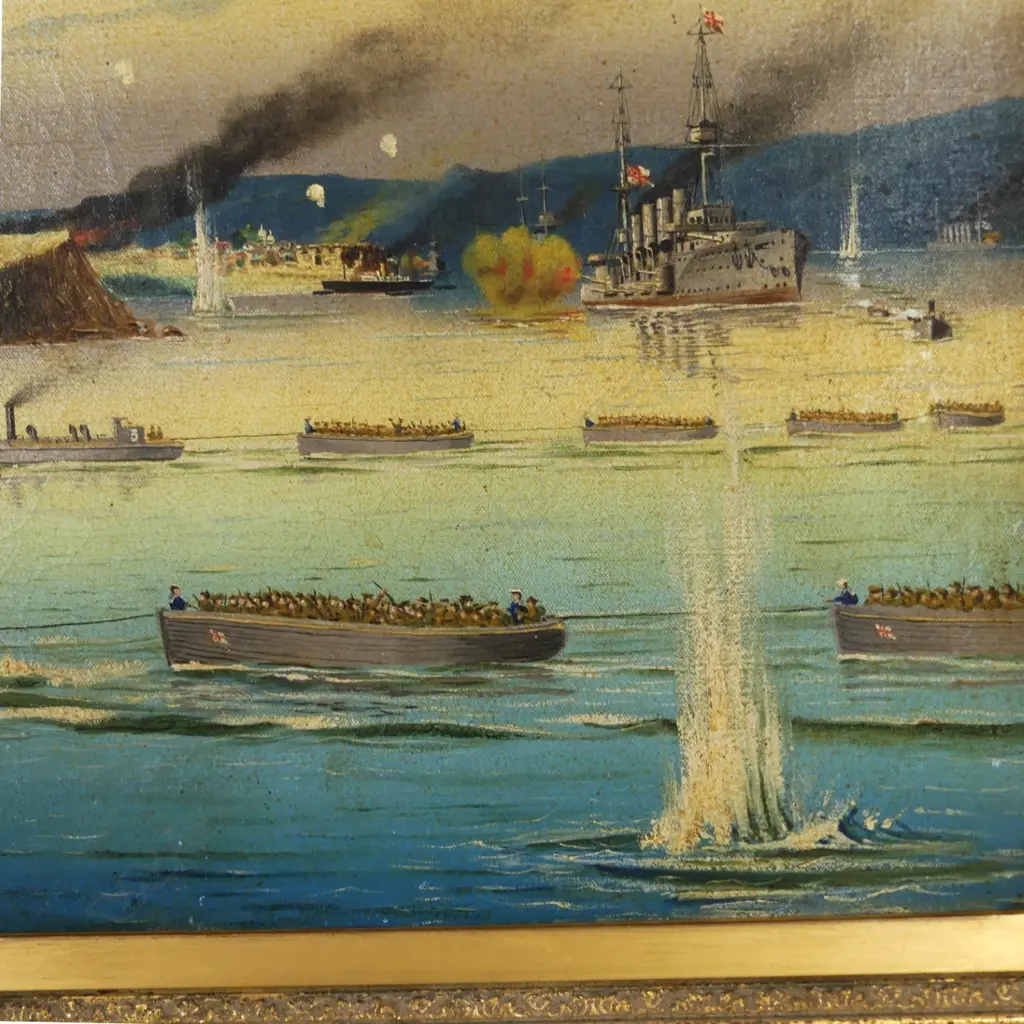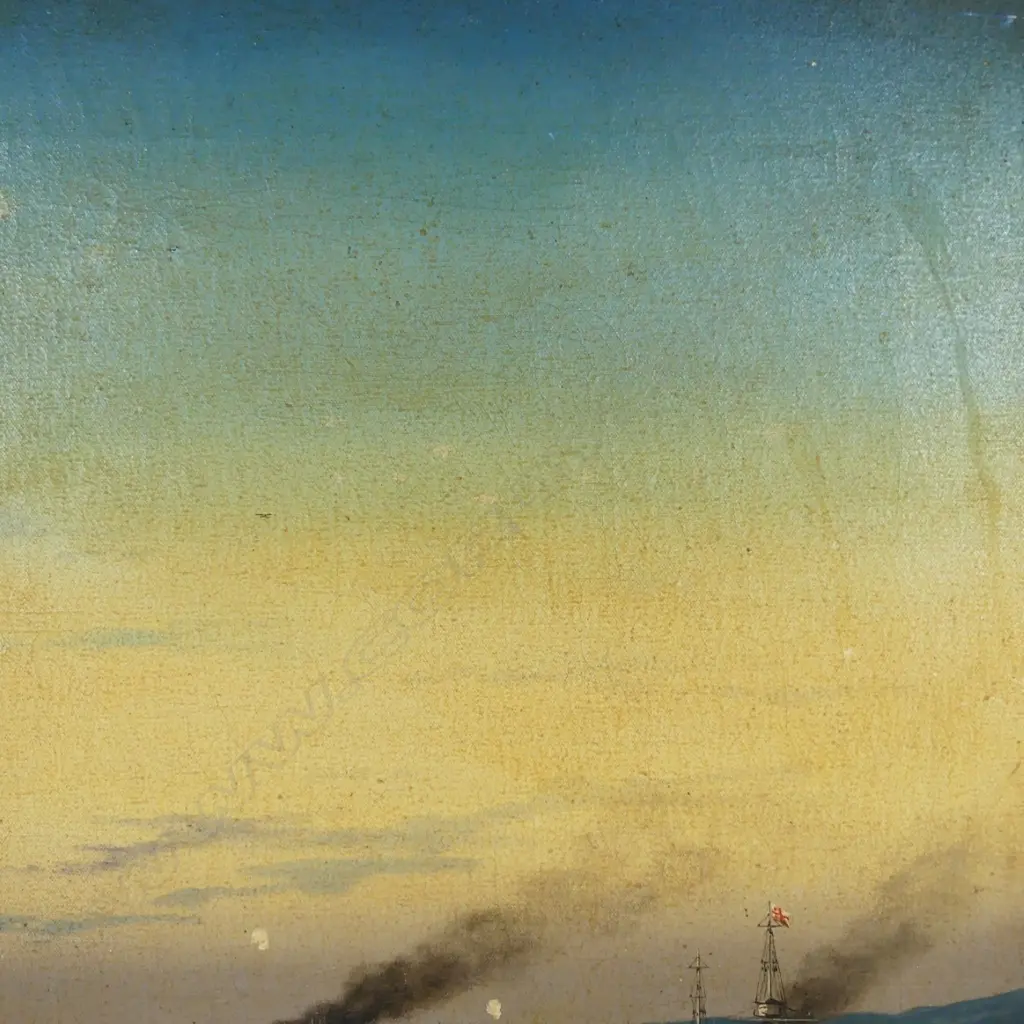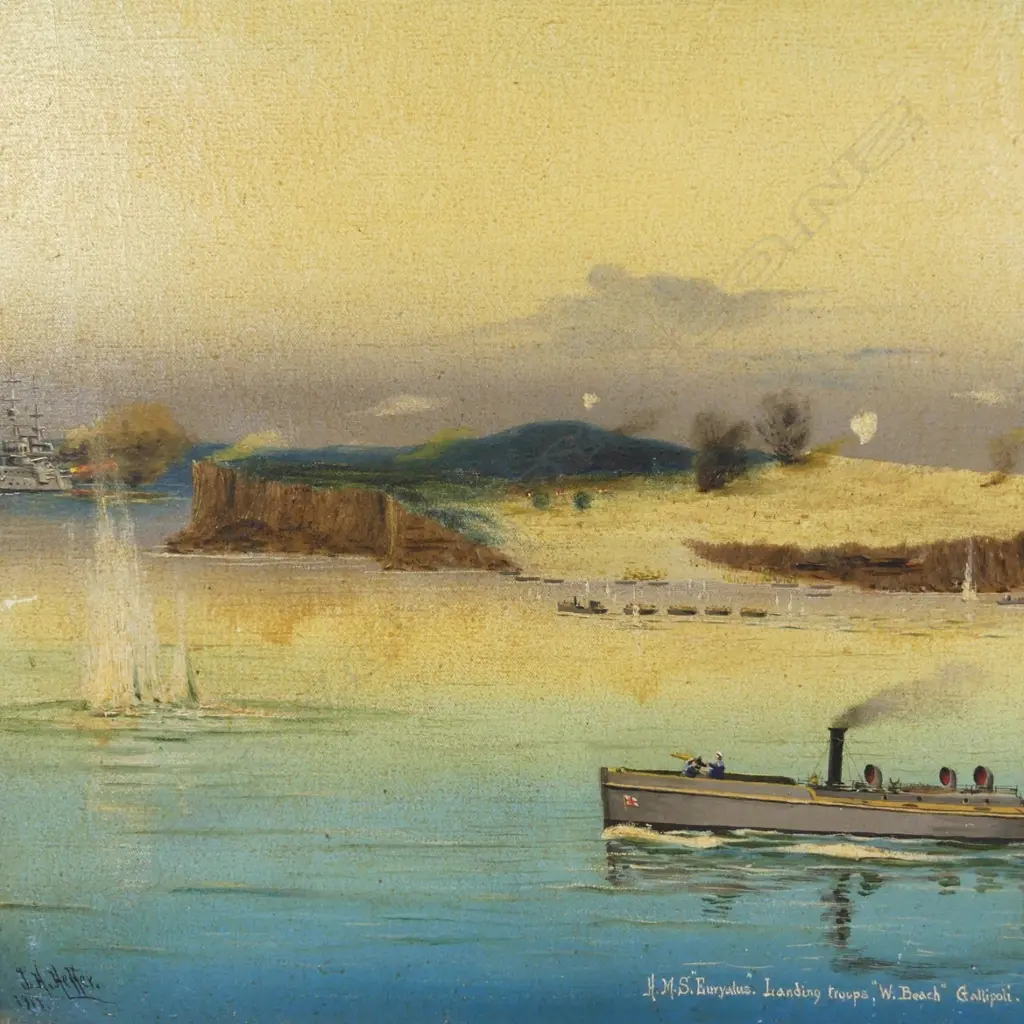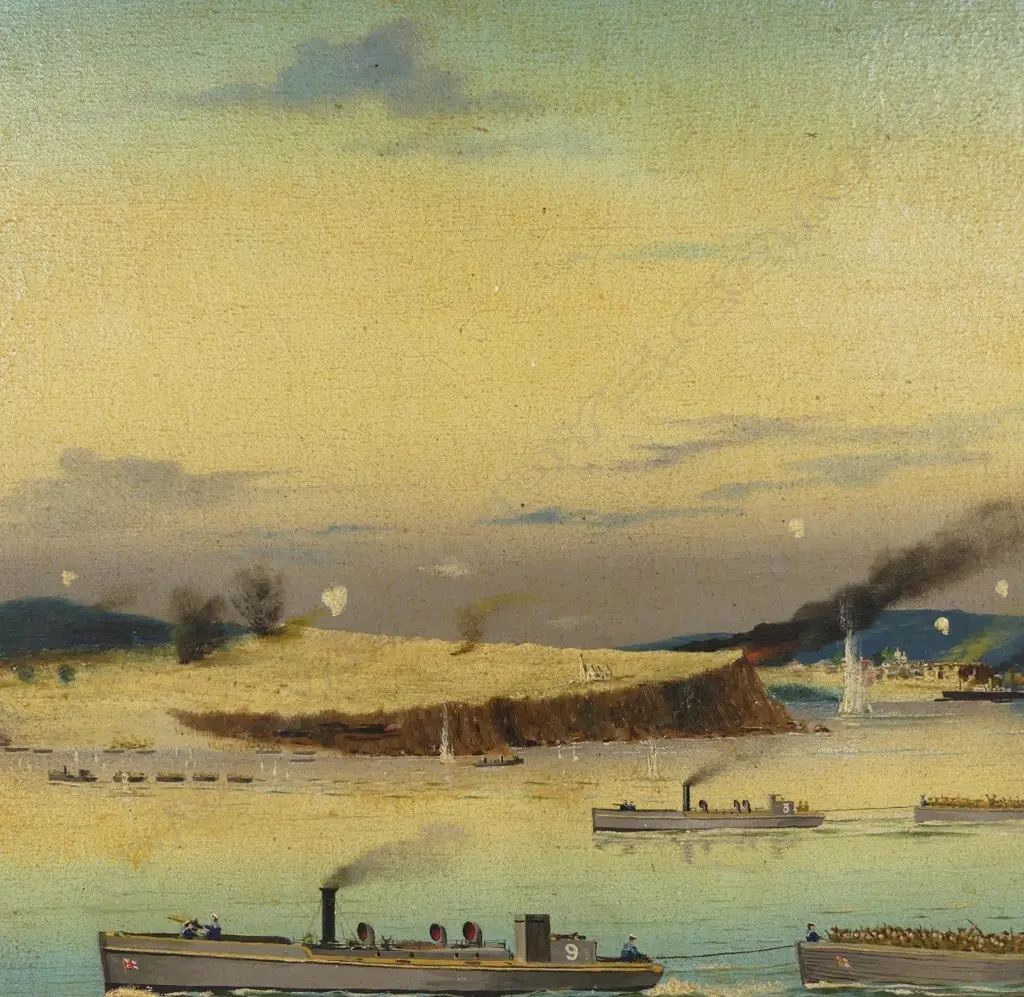JEWELLERY, ANTIQUE & ART AUCTION Tuesday, 15 October 2019 / 10:00 am start
J.H. Heffer (Petty Officer Royal Navy)
Lot Details
‘H.M.S. "Euryalus" Landing Troops - "W Beach" Gallipoli. 25th April. 1915.', oil on canvas, signed and dated 1917 lower left, entitled lower centre. 670mm x 885mm. Note: This work represents one of very few images depicting the first day of the Gallipoli campaign. Also important is the fact that the artist was a serving member of the Royal Navy taking part in the campaign. The painting represents a unique opportunity to capture the history of one of The First World War’s both tragic and famous moments. HMS Euryalus was an armoured cruiser built for the Royal Navy around 1900. She became flagship of the Southern Force defending the eastern end of the English Channel and she was present at the Battle of Heligoland Bight a few weeks after the war began. In early 1915 Euryalus was assigned to support British troops during the Gallipoli Campaign by providing naval gunfire. She covered the landing at Cape Helles in April as well as providing fire support during one subsequent British offensive. When the war ended, Euryalus returned home in 1919. The Artist: Petty Officer J.H. Heffer (Royal Navy) served on the H.M.S. Euryalus and personally witnessed the images in the paintings he produced. In this way, his works are unique. W Beach lay on the coast to the north-west of Cape Helles. The Ottomans had mined the beach and laid extensive barbed wire entanglements, including one along the shore and trip wires just under the surface of the water, a few yards offshore. Trenches on the high ground overlooked the beach and machine-guns were hidden in the cliffs, there were two redoubts close to Hill 138, both extensively wired, the slopes offered no cover. The 1st Battalion of the Lancashire Fusiliers were embarked in the cruiser Euryalus and the battleship HMS Implacable, which took up positions off the beach. The troops transferred to thirty-two cutters at about 4:00am and Euryalus closed in on the beach at around 5:00am. An hour later, the six tows from Euryalus sailed towards the shore, in line abreast at 50 yard intervals, the tows from Implacable to the left. As the tows reached to within 50 yards of the shore they were cast off and the sailors in the cutters began to row. The shore had been silent but as the first boat landed, Ottoman small-arms fire swept the British and caused many casualties. Euryalus and HMS Swiftsure lifted their bombardment ten minutes before the British landed and the Ottoman infantry had been able to emerge from cover. The survivors jumped from the cutters and tried to rush ashore but many leapt into deep water and sank under the weight of their equipment. The preliminary bombardment had not cut the wire along the shore and the surviving Fusiliers were fired on from three sides as they cut the wire or crawled underneath. Naval observers could see the trenches on the cliff top and as the British attacked the ships were raking the ground with shells, and the Turks were also killed by the hundreds as they retreated. The second wave of tows had landed with few losses at around 7:30am and prepared to attack Hill 138 with the survivors of the first wave. An inaccurate map caused delay. During the landing, compasses, binoculars and watches had been soaked which added to the confusion. Two parties attacked the redoubts but were repulsed.

